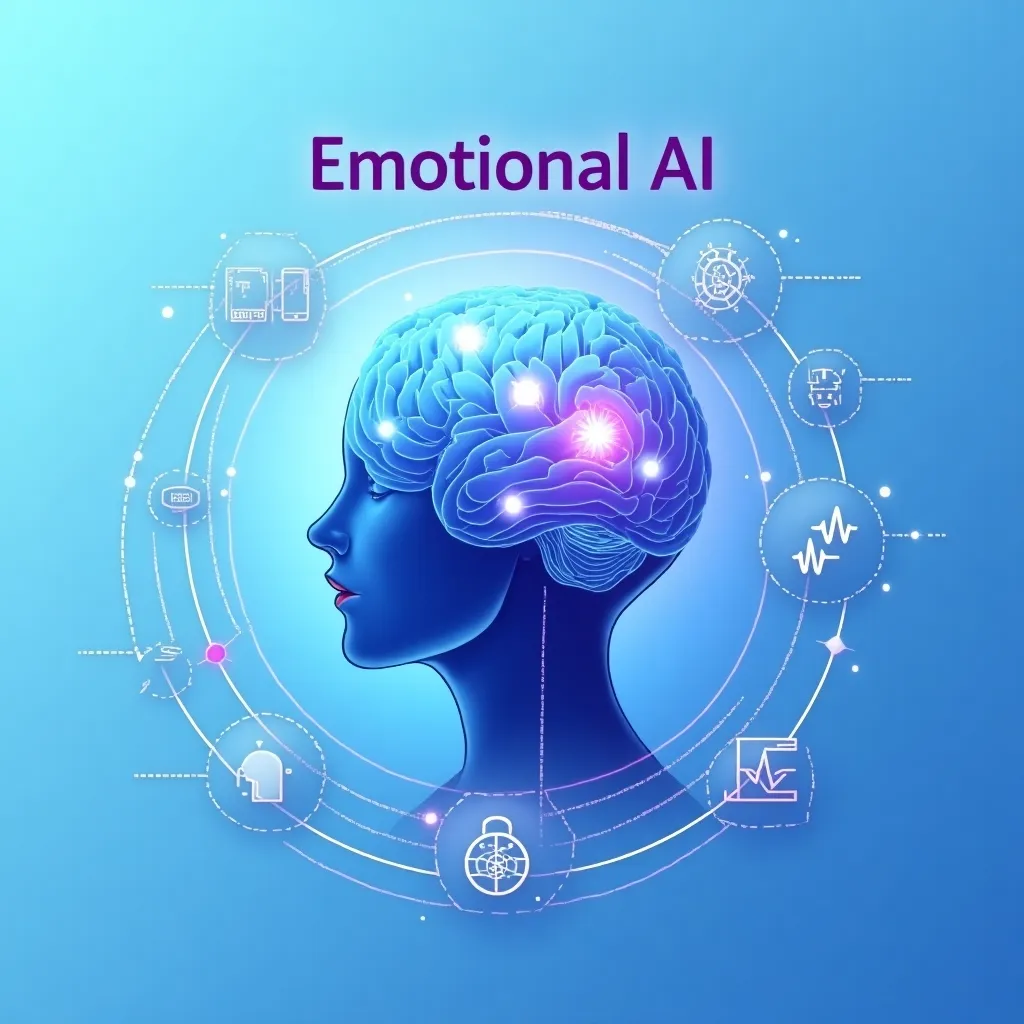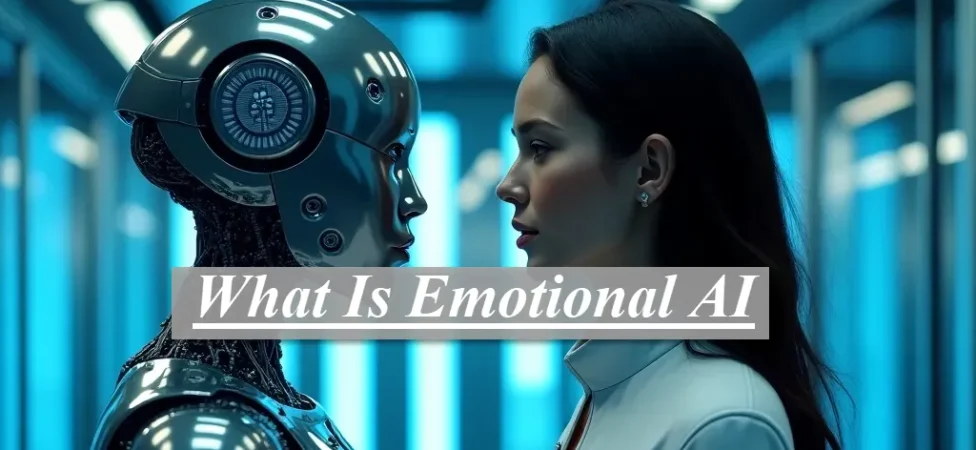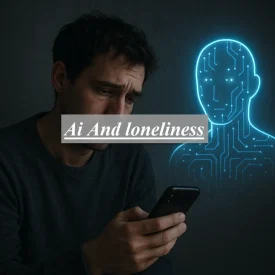Ever wondered if machines could actually understand how you’re feeling? That’s what Emotional AI is all about. It’s a smart type of artificial intelligence that picks up on human emotions—like happiness, sadness, or frustration—by looking at things like your face, voice, or even how you type. It then responds in a way that feels more personal and helpful.
In simple words, Emotional AI makes tech feel less robotic and more like a caring friend. Instead of just churning out facts, it adapts to your mood, making interactions smoother and more fun. It’s popping up everywhere, from apps that check your stress levels to chatbots that know when you’re upset.
Key Takeaways
- Emotional AI helps technology recognize and react to human emotions by looking at things like voice, facial expressions, and actions.
- It’s already being used in healthcare, education, customer service, and wellness apps to make interactions more empathetic.
- Emotional AI creates personalized experiences by adjusting responses based on how you’re feeling.
- Tools like chatbots and wearables can detect stress, offer support, or suggest calming activities in real time.
- Emotional AI shows a lot of promise, but there are still some challenges—like bias, privacy issues, and the need to be more open about how it works.
Definition and Overview
Emotional AI is AI that detects, understands, and even mimics emotions using data from our expressions and behaviors.
Think of it as giving machines a little emotional know-how. What began as cutting-edge research now drives everyday technologies, from virtual assistants that lift your mood to devices that monitor your well-being.
Here’s a quick breakdown of what emotional AI actually does :
- Detection: Spots emotions right away.
- Response: Changes what it does based on how you feel.
- Simulation: Acts like it has feelings to connect better.
Emotional AI vs. Traditional AI
Traditional AI is great at crunching numbers or following rules, like suggesting movies based on what you’ve watched before. But it doesn’t get the emotional side—it’s all logic, no heart.
Emotional AI steps it up by tuning into feelings. For instance, while regular AI might just answer a question, Emotional AI could sense you’re annoyed and reply more gently.
Unlike regular AI that just follows rules, Emotional AI uses ideas from AI communication to understand your feelings and respond in a more human way.
The big difference? Traditional AI handles tasks; Emotional AI builds connections by caring about emotions.
Affective Computing
Affective computing is the tech behind Emotional AI—it’s all about making computers recognize and respond to emotions, just like people do.
It was an idea from researcher Rosalind Picard, mixing AI with how we feel. Using cameras or sensors, it reads signals like a smile or a sigh.
Basically, it turns gadgets into something more empathetic, like a buddy who knows when you need a pick-me-up.
How Emotional AI Works
Curious how this magic happens? Emotional AI follows a step-by-step process to sense and react to emotions.
It gathers data, crunches it with smart tech, and pulls in some psychology to make sense of it all.

- Data Collection and Signal Processing
First off, it gathers info from sources like your webcam for facial cues or a mic for voice changes, drawing on technologies used in emotion recognition using speech and facial signals.
Then, it processes these signals—cleaning up the noise and spotting patterns, like a faster heartbeat, meaning stress.
This turns everyday inputs into clear emotional clues.
- Underlying Technologies
The backbone includes machine learning, which learns from tons of examples to spot emotions accurately.
Technology like computer vision scans faces, and natural language processing checks text for feelings.
Together, they make quick, spot-on detections.
- Integration of Psychology and Cognitive Science
Psychology helps by using ideas like Paul Ekman’s theory of basic emotions—think joy or anger—to guide the AI.
Cognitive science adds understanding about how minds work, including cultural differences in expressing feelings.
This mix keeps the AI’s responses feeling real and helpful.
Types of Emotional AI Systems
Emotional AI shows up in different shapes, each fitting specific needs. It might be chatting with you or worn on your wrist, but it always aims to make life a bit easier.
Chatbots and Virtual Agents
These act as digital companions that chat and pick up on your mood. If you’re frustrated, they may respond in a calming tone.
They’re highly effective in support roles, such as bots designed for mental health conversations.
Wearable Devices
Think smartwatches or fitness trackers that monitor your heart rate or sweat to gauge stress. They ping you with tips, like “Take a deep breath,” to keep you balanced.
Emotion Recognition Apps
These apps snap a photo or listen to your voice to tell you your mood. They can be great for tracking how you feel daily or boosting self-awareness.
Where Emotional AI Is Being Used
Emotional AI is making a real difference across several areas.

Healthcare
In healthcare, Emotional AI personalizes treatment by tracking patients’ emotions, helping detect early signs of depression or anxiety. It also supports therapy through emotion-aware apps that respond to how someone feels in real time.
Customer Service
In customer service, emotion-aware chatbots respond with more empathy, making conversations feel friendlier and more supportive. Plus, real-time voice analysis gives support teams a better sense of how customers are feeling, helping them improve the overall experience using emotion AI in customer support.
Education and Training
In education, Emotional AI keeps an eye on how engaged and stressed students are, especially during online classes. This has been explored in UNESCO’s review of Emotional AI in education, showing promise for improving student engagement and well-being.
This helps teachers tweak their lessons based on how students are feeling and encourages learners to become more aware of their own emotions.
Personal Development and Wellness
Finally, in wellness and self-improvement, AI powers coaching apps that offer personalized meditation and breathing exercises. It even suggests mood-based daily routines to help people feel their best.
Notable Companies in Emotional AI
Several innovative companies are leading the way in Emotional AI, each bringing something unique to the table.
For example, Cogito helps call centers by giving live emotion tips during conversations, so agents can connect better and have more meaningful talks.
Then there’s Affectiva, which specializes in reading facial expressions—this technology is often used in advertising and media testing to understand how people really feel.
Convin takes things further by helping sales teams boost their performance through analyzing emotions in conversations, making it easier to build trust and close deals.
Real-world Examples (Vedantu, Reassurance AI)
There are also some impressive real-world examples showing Emotional AI in action. Take Vedantu, for instance. Their online classes use AI to detect when a student looks confused and then adjust the teaching approach right away to help them out.
Another great example is Reassurance AI, which creates chatbots that feel like supportive friends, especially designed for mental health conversations. These examples highlight how Emotional AI isn’t just a concept—it’s already making a real difference in everyday life.
Benefits of Emotional AI
Emotional AI brings some really useful benefits. It helps make technology feel more human and more aware of how you’re feeling, which makes interacting with it a lot more natural.

More Empathetic Interactions
One big advantage is that it creates experiences that actually feel thoughtful. Instead of getting robotic replies, you get something that understands your mood.
Imagine a device noticing you’re tired and playing some relaxing music. That kind of response builds trust and makes tech feel more personal.
A Boost for Mental Health
Emotional AI is also being used to support mental health. It can track how you’re feeling and offer quick advice or simple tools when you need them.
If you’re having a tough day or just feeling off, it’s like having a little emotional check-in right when you need it.
Personalization That Feels Right
Another strength of Emotional AI is how it personalizes your experience. It can suggest things that match your mood, like cozy clothes when you’re feeling down or focused playlists when you’re trying to concentrate. It helps make everyday life feel more in tune with you.
AI Companionship Is Growing
Emotional AI is also changing how we connect with technology. More people are forming relationships with AI-powered digital companions that offer emotional support and meaningful conversation.
Platforms such as AI Girlfriends use this technology to create emotionally responsive connections that adapt to how you feel and interact. If you’re curious to learn more about this trend, check out our article on What is an AI Girlfiend.
Challenges and Ethical Considerations
While Emotional AI has a lot of promise, it’s definitely not perfect. There are some real challenges to think about, especially if we want this technology to be used in a fair, responsible way.
It’s powerful, but it needs to be handled with care.
Accuracy and Bias
One big issue is accuracy. Emotional AI doesn’t always get it right, especially when reading emotions across different cultures, age groups, or personalities.
What looks like frustration in one culture might be totally normal in another. If the system misreads emotions, it can lead to awkward or even harmful outcomes.
That’s why it’s so important to train these models on diverse data and constantly improve how they interpret emotions.
Privacy and Consent
Another big concern is privacy. Emotional data is deeply personal—it’s not just what you say, but how you feel. If an app or device is collecting that kind of data, people need to know exactly what’s being collected and agree to it.
Plus, that data has to be stored and handled securely. No one wants their emotional state tracked without permission or used in ways they didn’t agree to.
Transparency and Regulation
It also matters that people understand how Emotional AI is making decisions. If an AI tool responds to your sadness by changing its tone or making suggestions, you should know why it’s doing that.
Transparency builds trust. Luckily, regulations—like the EU Artificial Intelligence Act—are starting to set clear rules for how emotional data should be used. These kinds of policies help make sure the technology stays on the right track.
The Future of Emotional AI
Looking ahead, Emotional AI is only going to become a bigger part of our lives. As the technology improves, it’ll blend into our routines more naturally, making our interactions with devices feel even more human and responsive.

Smarter Technology on the Way
One exciting trend is how Emotional AI will start combining more signals to understand us better—things like tone of voice, facial expressions, and even body language, all working together.
We’re also starting to see emotional robots and advanced wearables that can sense how you feel and respond in helpful ways. These tools are getting smarter, more sensitive, and more in tune with real emotions.
Role in Daily Life
Emotional AI is also expanding into everyday places. Imagine cars that can sense when you’re stressed and adjust the ride to help you calm down, or smart homes that dim the lights and play relaxing music when they pick up that you’re winding down.
As more people form emotional bonds with AI companions, it’s also changing how they cope with feeling alone. You can read more about this in our article on AI and loneliness. These kinds of interactions will help make daily life feel smoother and more in sync with how you’re doing emotionally.
Human-Machine Understanding
As Emotional AI keeps evolving, it may start to show something closer to real empathy. That doesn’t mean replacing human connection, though.
The goal is to build stronger, more supportive relationships between people and technology. AI can be a helpful companion, but it’s not meant to take the place of real human care and connection. It works best as a thoughtful tool that supports emotional well-being, not as a substitute for it.
Looking Ahead
Emotional AI is changing how we connect with technology, making it feel less like a machine and more like something that actually gets us. From mental health support to personalized daily routines, it’s helping tech respond in ways that feel more human and thoughtful.
While there are definitely challenges around privacy, fairness, and accuracy, these are things we can improve as the technology grows.
The key is to use Emotional AI in a way that supports people—not replaces them. When done right, it can make everyday life more comfortable, more personal, and maybe even a little more caring.
As this space continues to grow, the future of Emotional AI looks not just smart, but emotionally aware—and that’s a pretty exciting direction to head in. If you’re interested in how this connection is evolving, check out our article on why people are turning to AI girlfriends.
Frequently Asked Questions
Can Emotional AI really feel emotions?
No, it doesn’t actually feel like humans do. It just reads emotional signals and reacts based on patterns. Think of it as being emotionally aware, not emotional itself.
How is Emotional AI used in real life?
You’ll find it in things like customer service chatbots that know when you’re frustrated, apps that track your mood, or smart devices that adjust based on how you’re feeling.
Is Emotional AI safe to use?
It can be safe when used responsibly. But since it collects personal data like facial expressions or voice tone, it’s important that companies protect your privacy and use the tech ethically.





